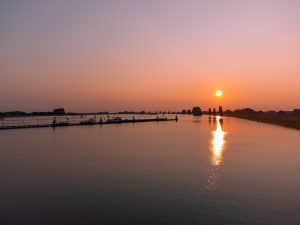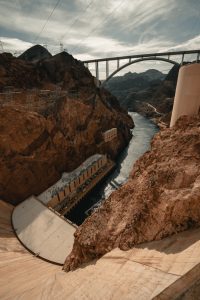How California Copes with Catastrophic Flooding
Climate change caused the apocalyptic floods in California. Climate change mediation can facilitate solutions.
 The floods that hit California in recent weeks have been catastrophic. While wildfires have received more attention, the death toll from flooding in 2023 has been higher than recent wildfire seasons. It may be counterintuitive that California, a drought ridden state, could also suffer from flooding, but climate change has caused extreme weather events that have made the Western USA a victim of disasters at either end of the scale. Floods, fires and droughts are a sign that the weather systems we rely on are no longer in balance. Droughts and fires cause vegetation to die which can make flooding more damaging when water absorbance is reduced due to drought and fire causing vegetation loss.
The floods that hit California in recent weeks have been catastrophic. While wildfires have received more attention, the death toll from flooding in 2023 has been higher than recent wildfire seasons. It may be counterintuitive that California, a drought ridden state, could also suffer from flooding, but climate change has caused extreme weather events that have made the Western USA a victim of disasters at either end of the scale. Floods, fires and droughts are a sign that the weather systems we rely on are no longer in balance. Droughts and fires cause vegetation to die which can make flooding more damaging when water absorbance is reduced due to drought and fire causing vegetation loss.
The reason you’ve probably heard a lot about weather events like “atmospheric rivers” and “bomb cyclones” is that these extreme weather events are becoming more common due to climate change. “Atmospheric rivers” are the weather event that caused the recent catastrophic California flooding and they are caused by climate change. These long bands of moisture form in the air where they hover over large areas and can dump excessive rainfall.
Why is California being Hit with Flood and Drought?
California is one of the Western states that are increasingly vulnerable to climate change. Summer droughts have intensified in the West as summers have become hotter due to climate change. This is worsened by major infrastructural problems with the delivery of water. Storms and downpours are part of the increasingly erratic weather-patterns caused by changes in global temperature. They are exacerbated by failures of systems that were not built to withstand climate-change conditions. California’s infrastructure was built for conditions during which drought was less frequent, rains were lighter and groundwater and surface water was frequently replenished. We are now entering an era where rivers like the Colorado river are drying up due to drought, reduced snowmelt, and increased demand from agriculture and consumers. In a recent analysis of California’s flood and drought management failures , the New York Times pointed out that widening California rivers to allow the rivers to replenish during periods of heavy rainfall would partially solve the problem of both water supply and flooding. While there are many climate change interventions and adaptions, solutions like the former are not implemented easily, as they require people to give up land, move or substantially change their way of life.
, the New York Times pointed out that widening California rivers to allow the rivers to replenish during periods of heavy rainfall would partially solve the problem of both water supply and flooding. While there are many climate change interventions and adaptions, solutions like the former are not implemented easily, as they require people to give up land, move or substantially change their way of life.
How Do Communities Cope?
Communities in California will have to work together to withstand the immediate impacts of flooding and drought. They will also have to co-operate on long-term efforts to prevent these disasters. The immediate consequences of flooding for California include property damage, injury, loss of life, polluted flood-water, damage to heating and water systems in private homes and municipalities. Most California residents aren’t covered by flood insurance, so many private homeowners and renters will need to negotiate with landlords, insurance companies and local authorities to tackle the damage. California community members may need to involve themselves in efforts to compel local authorities to move more quickly with climate change prevention, flood prevention and compensation. When these issues are litigated they often move very slowly, but climate change mediation offers an opportunity to expedite urgent remediation efforts as well as long-term prevention measures so communities can be disaster-prepared.
The Case for California Climate Change Mediation
 California climate change mediation will be a big player in the future of climate change efforts in California. When there is conflict over common resources, “climate peace-building” is the only viable way forward. If people embark on a fight over limited resources the result is almost always protracted conflict which depletes the resource further. California residents don’t have the time to deplete dwindling natural resources in the face of climate change related scarcity.
California climate change mediation will be a big player in the future of climate change efforts in California. When there is conflict over common resources, “climate peace-building” is the only viable way forward. If people embark on a fight over limited resources the result is almost always protracted conflict which depletes the resource further. California residents don’t have the time to deplete dwindling natural resources in the face of climate change related scarcity.
Our California climate change mediators have extensive scientific, legal, financial and psychological knowledge contributing to effective climate change conflict resolution. We use mathematical modeling to show how resources are depleted by self interest and conflict. We can work with many diverse stakeholders to resolve issues facing communities in the path of climate change. Mediating climate change related issues resolves more quickly and cheaply than litigation. Since time is of the essence when it comes to climate change mitigation efforts, climate change mediation is the right choice. We can mediate any climate change related conflicts in-person or remotely. We have offices in San Diego, Silicon Valley and Berkeley CA, Bozeman, MT, and Michigan. Please contact us to learn more about how our climate change mediation services can support your community’s climate change recovery efforts.
